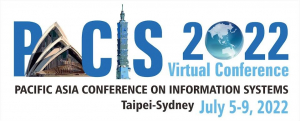PACIS 2022 Proceedings
Loading...
Paper Number
1407
Abstract
Many educational software engineering (SE) projects are done with little or no real outside involvement. Also, with an outside customer, the objective is typically to produce a demo, proof of concept, or minimum viable product. These lack real pressure from outside stakeholders because technological solutions are often agreed on based on a curriculum, and implemented features can be negotiated based on the students’ skills and the course schedule. Therefore, typical industry–education cooperation SE projects hardly resemble the real SE projects carried out in software companies. To overcome these limitations, we developed and tested a university–industry model where real-life development pressure coming from real customers and a software provider was generated to suit educational purposes. The model was beneficial for all parties and produced a more realistic learning experience compared with other project-based models. However, the model also required additional support, such as facilitation and mentoring for the students.
Recommended Citation
Kauppinen, Raine; Lagstedt, Altti; Lindstedt, Juha P.; and Rainio, Ohto, "Software Engineering Education with Industry-Mentored Projects" (2022). PACIS 2022 Proceedings. 134.
https://aisel.aisnet.org/pacis2022/134
When commenting on articles, please be friendly, welcoming, respectful and abide by the AIS eLibrary Discussion Thread Code of Conduct posted here.



Comments
Paper Number 1407